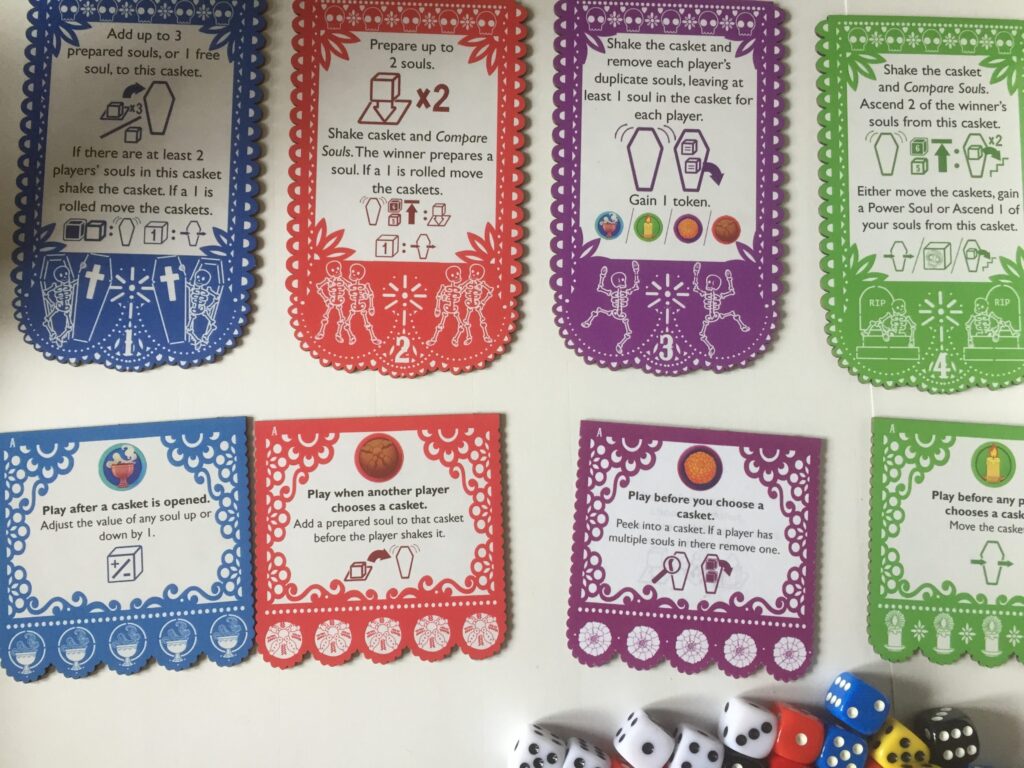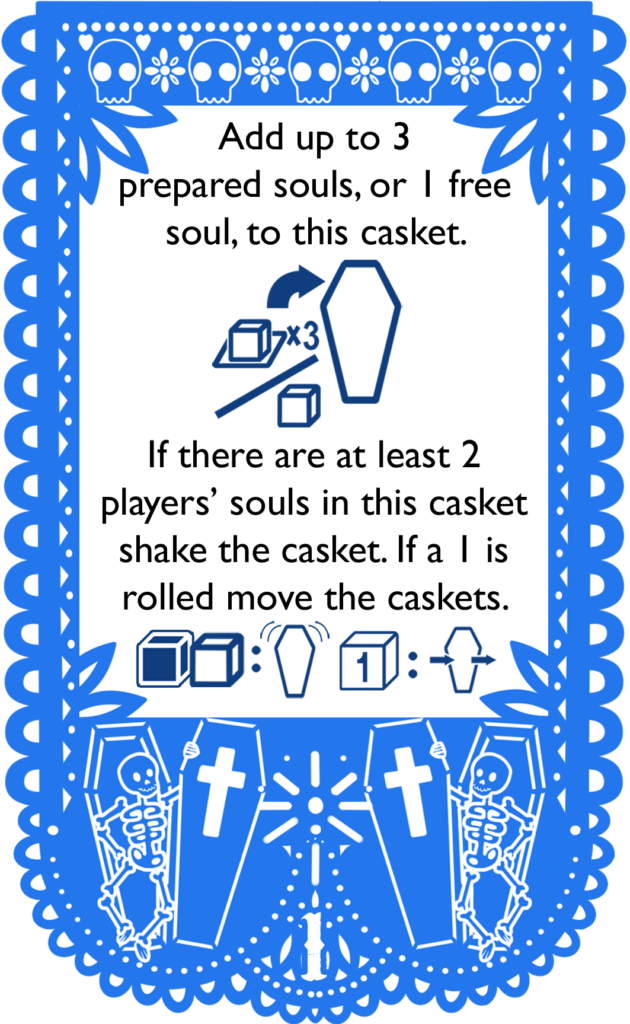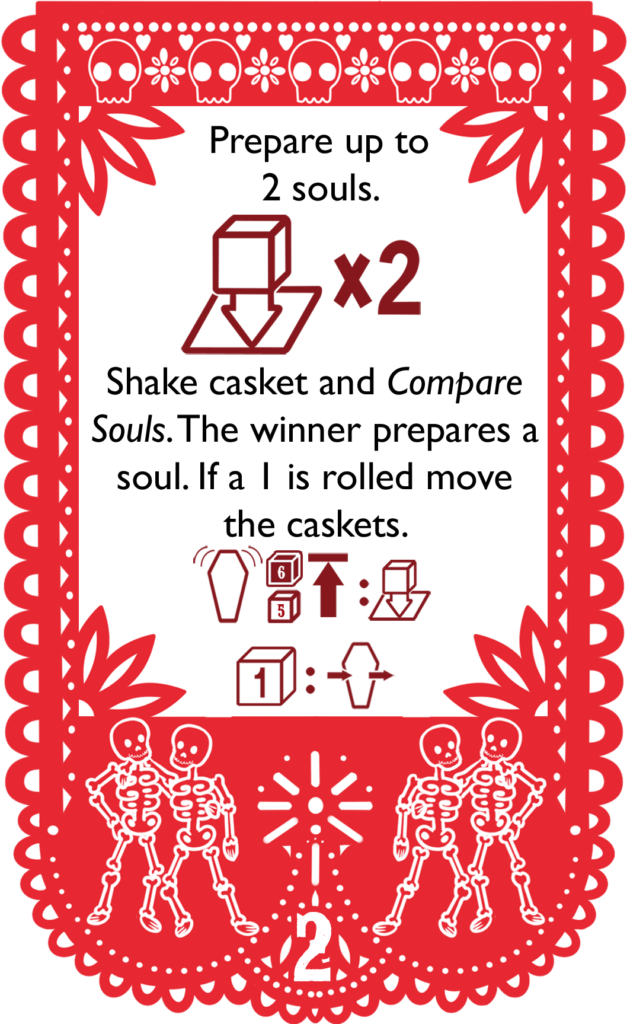This is the first of 2 deep dive’s into the mechanics of Die of the Dead’s caskets. I’ve tried to focus on why we made decisions rather than just explain the rules. However, some understanding of the rules are needed, so a brief summary: in the game players are trying to get their dice (representing souls) from their player board, into the caskets, then from the caskets to the steps. On a player’s turn they choose a casket to help with this. Now the blog…
As Die of the Dead centres around the caskets, the actions they do is key to the game. Given that a player’s turn is choosing a casket, we needed the following things to be true:
- Each casket represents a distinct purposeful choice
- The current player is rewarded on their turn
- All other player’s are still invested in the outcome

For the first point we wanted each casket to perform different yet useful actions. Some may be more useful than others, but rarely did we want it to be a forgone conclusion which one to choose, or make it so it didn’t matter. Therefore each casket does something different.
The second and third points are connected. Initial playtests had some caskets which only rewarded the current player, and other caskets which only rewarded the player who rolled highest. Both of these were unfulfilling to players- having dice rolled but no outcome was counterintuitive and missed a gap were an element of surprise could be. Taking your turn and receiving nothing because of an unlucky dice roll was demoralising and harsh. So each casket has two actions, one which rewards the current player, and one which uses the dice rolls.
The first two caskets are both centred on the beginning of the journey, with a primary action to help players get more dice in the caskets, and a secondary action to engage all players.

The first casket is always open, and how dice enter the caskets. A player who chooses this can add dice into the casket. Because this casket is always open, players don’t need to remove the lid to do so, and can always see who else has dice in the casket. This casket is the beginning of a player’s dice traveling to the land of the living. Therefore the second action is to shake the casket and move all caskets along one, depending upon the result of the dice. Initial tests with different outcomes were difficult- either too complex, or occurred too often. One of the most powerful things a player can have is a casket with only their dice in it. To resolve this we tried different methods, but the simplest was just to only allow this secondary action if there are at least two player’s dice in the casket. A simple change which made a massive improvement. And can be summed up as “You never travel alone”.

The second casket is also about helping players on their journey, but we had to be different to the first (keep each choice purposefully distinct). This caskets primary action is to prepare dice to be added to casket 1. This allows players to add more dice at once rather than one at a time. The secondary action lets a player prepare a die, but this depends upon the roll of the dice in the casket. This keeps all players invested in the outcome, you can gain on another player’s turn, whilst rewarding the current player.
Casket 2 can also cause the caskets to move. Both of these caskets are about progression and starting the journey. And we’ve found the mechanic supports the theme which goes back to support the mechanic. In our next blog, we’ll look at how the last caskets are about overcoming trials and ending journeys.